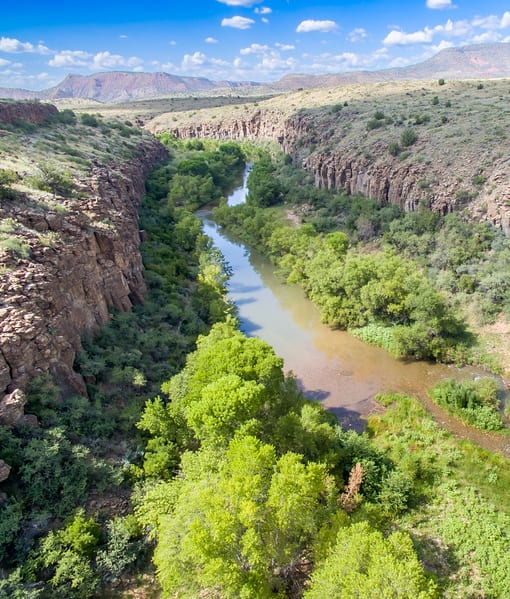Freshwater lifelines in a sea of desert
In Arizona, the fourth driest state in the U.S. and the only state where all four North American deserts are found, riparian habitat is a rarity. In this arid and ecologically fragile region of the American West, rivers like the Verde, Salt and Gila, as well as tributary streams like the East Verde and Fossil Creek, are crucial to fish and wildlife. Recognizing the importance of two of these rivers, Congress created the Tonto National Forest in 1905 to protect the watersheds of the Salt and Verde rivers. In 1984, the latter became the first Wild and Scenic rivers in the state.
The Verde and Salt rivers are freshwater lifelines for the diverse fish and wildlife of the Tonto National Forest, which spans nearly three million acres, from saguaro cactus-studded desert to pine-forested mountains beneath the Mogollon Rim. One of the country’s largest national forests, the Tonto is home to more than 400 vertebrate species, including 21 listed as threatened, endangered or state sensitive.
Protecting habitat and access at the edge of the Mazatzal Wilderness
In 2019, Western Rivers Conservancy successfully protected a mile of the East Verde River, a crucial tributary to the Verde, by conserving the 149-acre Doll Baby Ranch. Our efforts conserved prime habitat along the East Verde and secured permanent recreational access to a key gateway into the popular Mazatzal Wilderness Area. That entrance could have been permanently closed had WRC not purchased the ranch.
The project benefits at least 10 native fish species with special status within the Tonto National Forest. These include Colorado pikeminnow, Gila topminnow and razorback sucker (all endangered); roundtail chub (proposed threatened); desert sucker, Sonora sucker, Gila longfin dace and speckled dace (all species of concern). The ranch and surrounding national forest are also designated Critical Habitat for narrow-headed garter snake, northern Mexican garter snake, Mexican spotted owl and Chiricahua leopard frog—all threatened species. The area hosts northern goshawk, mule deer, whitetail deer, Rocky Mountain elk, bobcat, coyote, mountain lion and black bear, among others.
With elevations between 1,300 and 7,900 feet, the Tonto National Forest offers outstanding year-round recreation for countless Arizonans. Eight Wilderness Areas, including the 252,000-acre Mazatzal Wilderness, provide hiking, backpacking, birding and other activities. Doll Baby Ranch, which lies two hours from Phoenix and 10 miles from Payson, controls a key, private road that accesses the Mazatzal Wilderness and a trailhead to the Arizona Trail National Historic Trail. The U.S. Forest Service ranked the project its top priority, and WRC’s efforts resulted in lasting protection of this important property.
Funding for the East Verde River Project was made possible through generous contributions from multiple sources, including the David and Lucile Packard Foundation and with the generous support of many additional individuals, foundations and businesses.










